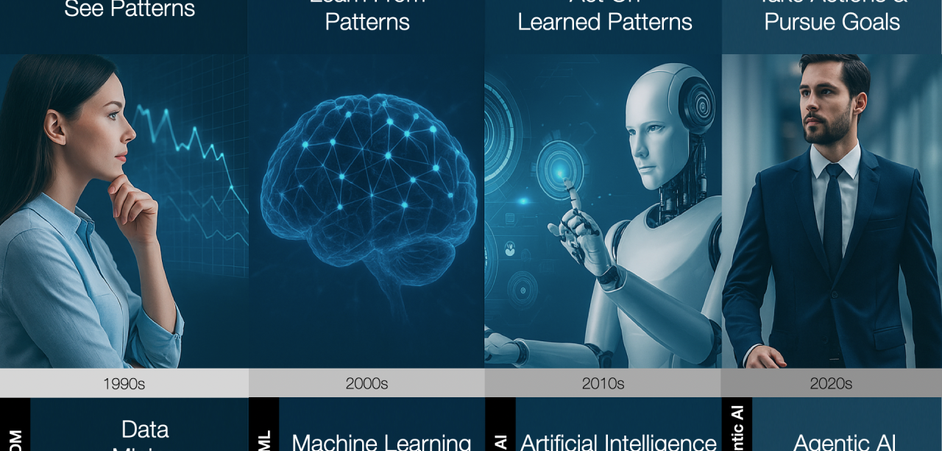
Written by Anas Homaidani
KUWAITNET's Chief Commercial Officer - CCO
In today’s tech-driven world, terms like AI, Machine learning and Agentic AI are often used interchangeably — and just as often misunderstood. But understanding the progression from one to the next is key to grasping how we got from analyzing spreadsheets to building intelligent systems that can write, speak, and even reason.
How is this connected to Data Mining, and how did we get here?
Let’s break it down.
Before machines could learn, they had to observe. Data mining emerged in the 1990s as a method of extracting useful patterns and relationships from large datasets. Think of it as teaching systems to see interesting patterns in raw data.
Techniques like clustering, association rules, and classification allowed companies to segment customers, detect anomalies, and forecast trends. From market basket analysis in retail to fraud detection in banking, data mining was the first step in giving machines analytical insight.
But while data mining could find the “what,” it couldn’t evolve or adapt to new data. That’s where machine learning stepped in.
Machine Learning (ML) built upon the pattern recognition foundation laid by data mining. Rather than simply discovering relationships, ML introduced algorithms that learn from data and improve over time — no need for constant human rules or updates.
From supervised learning (like predicting credit risk) to unsupervised learning (like customer segmentation) and reinforcement learning (used in robotics and gaming), ML became the engine of modern data-driven decision-making.
Examples you interact with daily — recommendation engines on Netflix, personalized ads, or even spam filters — are all powered by ML.
Artificial Intelligence (AI) encompasses both data mining and machine learning — and more. Where ML focuses on prediction and pattern recognition, AI aims to simulate human intelligence: understanding, reasoning, deciding, and even communicating.
In simple terms, ML is a subset of AI — a way to train systems. But AI is the broader goal: creating systems that perceive the world and act intelligently.
Today’s AI systems are behind:
And behind them all? Machine learning models… built on data… discovered through data mining.
Think of the progression this way:
Each layer depends on the one before it — a natural evolution from information to insight to intelligence.
We’re now entering a new phase of AI — not just reactive tools, but proactive digital agents.
Agentic AI refers to systems that don’t wait for instructions. They:
Unlike chatbots that only respond to prompts, these agents can plan, reason, and collaborate with other systems. They represent the next frontier of business automation, customer experience, and digital transformation.
In the next article, I’ll dive deeper into what makes agentic AI different — and how it will shape the future of enterprise and daily life.
The journey from data mining → machine learning → AI → AI agents is not just a story of technology — it’s a story of progress.
Understanding this evolution helps businesses evaluate where they are today and where they need to go. Because in a world shifting from automation to autonomy, those who understand the spectrum will lead the transformation.
AI, AgenticAI, DataMining, DigitalTransformation, IntelligentSystems, Kuwaitnet, Machinelearning,